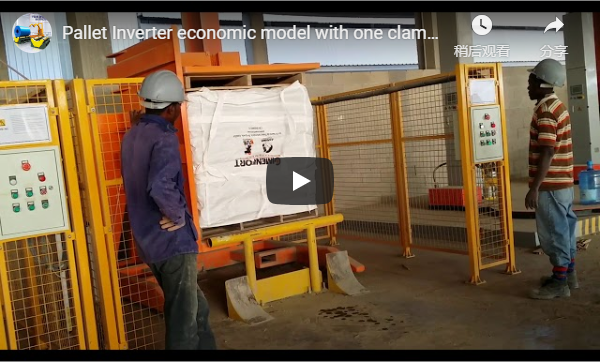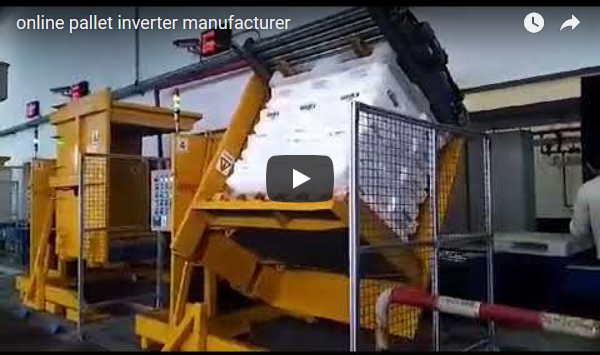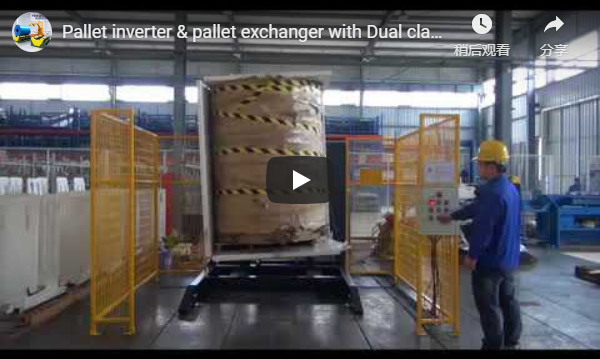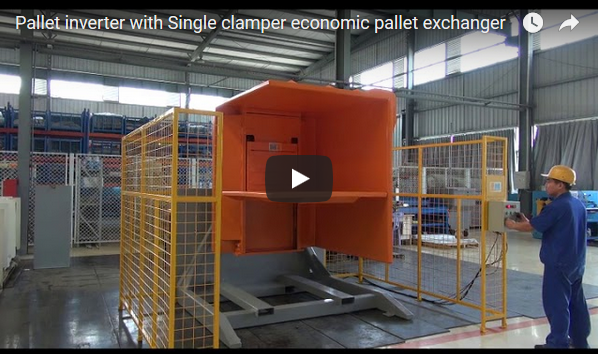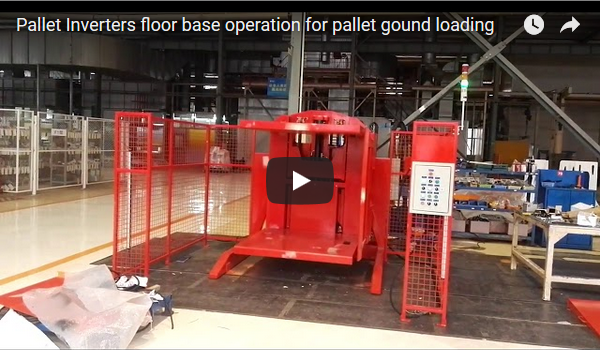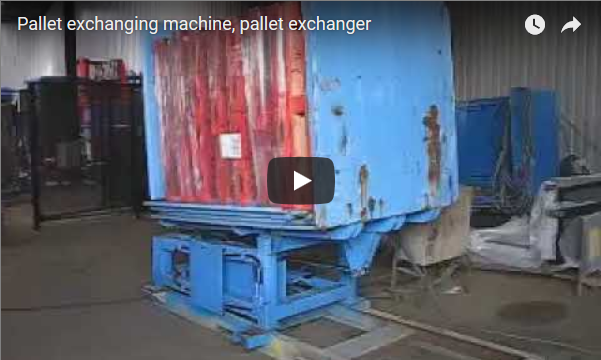Understanding the 95° Pallet Exchanger: Operation, Applications, and Technical Insights
The 95° pallet exchanger, often referred to as a pallet tipper or load inverter, is a specialized piece of material handling equipment designed to efficiently and safely exchange goods from one pallet to another by tilting the load approximately 95 degrees. This capability is crucial in numerous industrial settings for reasons ranging from hygiene control to logistical efficiency and damage prevention. Unlike full 180° inverters, the 95° tilt mechanism is often chosen for specific load types or operational flows where a full inversion isn't necessary or desired.
1. Visualizing the Operation
To better understand the mechanics and typical operation cycle, observe the following demonstration:
2. How the 95° Pallet Exchanger Works
The core function involves securing a loaded pallet, tilting it, and allowing for the removal and replacement of the base pallet. The typical operational sequence involves:
- Loading: The loaded pallet (e.g., a wooden pallet) is placed into the exchanger, often using a forklift or pallet jack.
- Clamping: Side pressure walls or a top clamp engage to securely hold the product load independent of the original pallet. The pressure is carefully controlled to prevent product damage.
- Tilting: The machine's mechanism, typically powered by hydraulics, tilts the clamped load and the original pallet backwards to an angle of approximately 95 degrees. Gravity assists in keeping the load stable against the machine's back or side support during the tilt.
- Pallet Exchange: With the load tilted and supported, the original pallet is now accessible at the base and can be easily removed. A new pallet (e.g., a plastic hygiene pallet or a shipping pallet) is then placed into position.
- Return and Unloading: The machine tilts back to the upright position, placing the load squarely onto the new pallet. The clamping mechanism releases, and the newly palletized load can be removed.
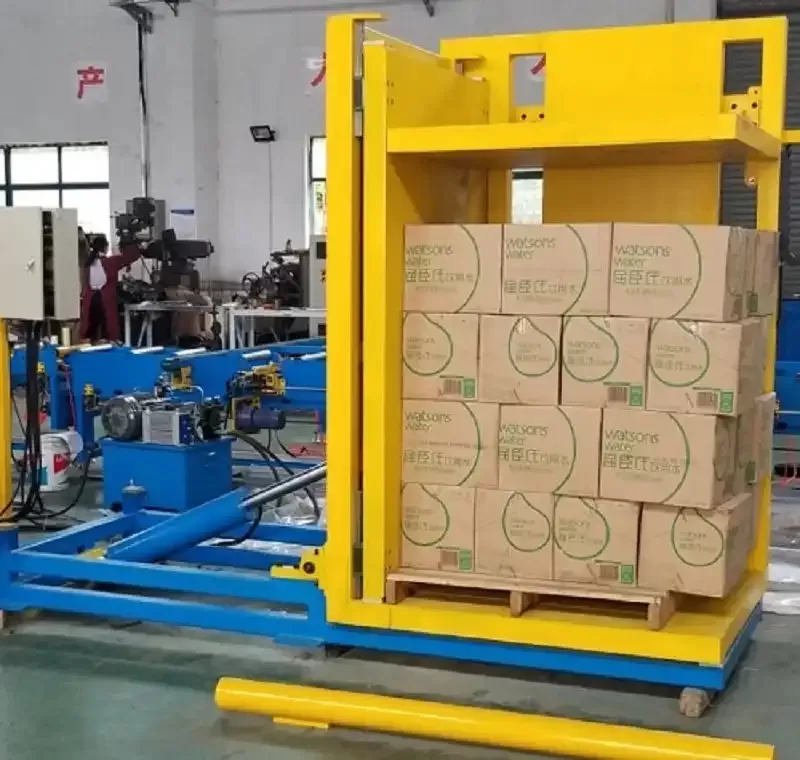
3. Key Technical Specifications (Typical Ranges)
Note: The parameters listed below represent common specifications for 95° pallet exchangers. Actual machine specifications can vary based on design and customization. The equipment shown in the video may have different specifics; always refer to manufacturer documentation for exact details.
- Machine Type: Hydraulic or Electro-Mechanical Pallet Exchanger/Tipper
- Load Capacity: Typically ranges from 1000kg (2200 lbs) to 2000kg (4400 lbs) or more.
- Tilt Angle: Fixed at approximately 95 degrees.
- Pallet Compatibility: Designed to handle standard pallet sizes (e.g., GMA, EURO) and types (wood, plastic, metal), though adjustability may vary.
- Operation Mode: Semi-automatic (operator initiates cycles via control panel) or fully automatic (integrated into conveyor lines).
- Cycle Time: Generally 30-60 seconds per exchange, influenced by load weight, operator efficiency, or automation integration.
- Power Unit: Commonly uses 3-phase power (e.g., 380V/50Hz or 480V/60Hz), specific to regional requirements. Hydraulic system pressure and flow rate are key performance indicators.
- Control System: Often utilizes a Programmable Logic Controller (PLC) paired with a Human-Machine Interface (HMI) for operation, diagnostics, and parameter adjustments (like clamping pressure).
- Safety Features: Essential features include safety guarding or light curtains, emergency stop buttons, pressure relief valves, secure load clamping sensors, and controlled tilting speed.
- Approximate Footprint (Varies greatly): Length: 2200-2800mm; Width: 1400-1800mm; Height: 1800-2500mm. Installation space requires clearance for loading/unloading and maintenance access.
4. Core Applications and Problem Solving
The 95° pallet exchanger provides practical solutions across various industries:
- Food & Beverage / Pharmaceuticals: Facilitates the transfer of goods from external wooden pallets onto internal, sanitized plastic or aluminum pallets before entering cleanroom or production environments. This is critical for meeting GMP (Good Manufacturing Practice) and HACCP (Hazard Analysis Critical Control Point) hygiene standards, preventing cross-contamination.
- Chemical and Hazardous Materials: Enables safe switching from potentially contaminated or damaged pallets to compliant shipping or storage pallets without direct manual handling of sensitive or hazardous goods. The controlled tilt minimizes spill risk.
- Manufacturing & Distribution: Allows quick replacement of broken or unsuitable pallets under finished goods or raw materials, preventing product damage during transport or automated storage (AS/RS). It's also used to switch between in-house captive pallets and outbound shipping pallets.
- Printing and Packaging: Paper stacks and other sensitive materials can be transferred between pallets without disturbing the stack alignment, which is difficult to achieve manually.
- Cold Storage Logistics: Efficiently swaps pallets without prolonged exposure of temperature-sensitive goods to ambient conditions, maintaining the cold chain integrity.
5. Advantages in Material Handling Operations
Implementing a 95° pallet exchanger offers several benefits:
- Enhanced Safety: Significantly reduces the need for manual lifting and restacking of heavy or unstable loads, lowering the risk of musculoskeletal injuries.
- Improved Efficiency: Dramatically speeds up the pallet exchange process compared to manual methods.
- Product Protection: Minimizes the risk of damage to goods during the transfer process through secure clamping and controlled motion.
- Hygiene Compliance: Essential for industries requiring strict separation between external contaminants and internal processes.
- Operational Flexibility: Allows seamless integration of different pallet types within a facility or supply chain.
- Reduced Labor Costs: Automates a physically demanding task, freeing up personnel for other duties.
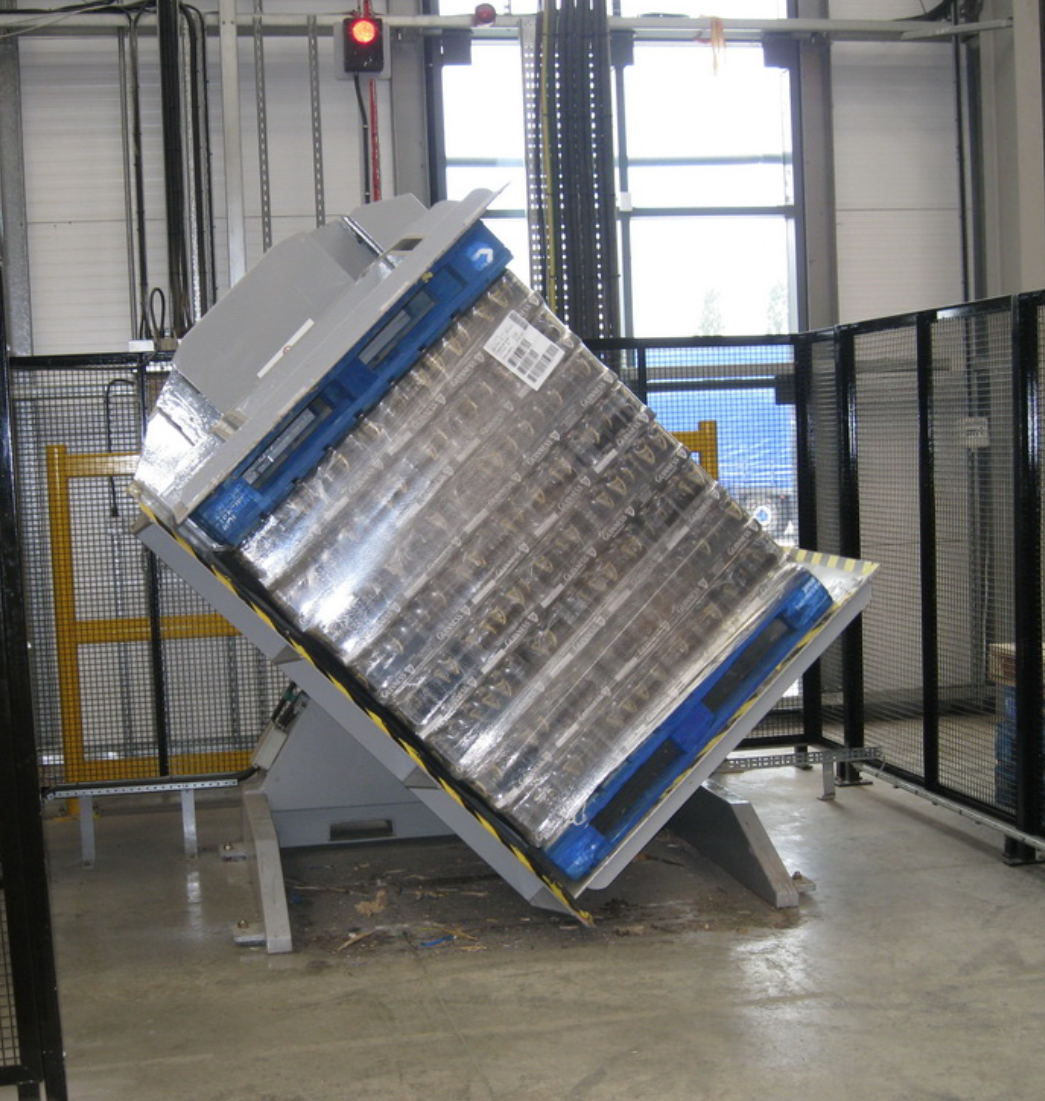
6. Implementation Considerations
Before integrating a 95° pallet exchanger, consider these factors:
- Load Characteristics: Assess the weight, dimensions, stability, and fragility of the loads to be handled. Ensure the chosen machine's capacity and clamping system are suitable.
- Pallet Types and Sizes: Verify compatibility with all pallet types (wood, plastic, block, stringer) and sizes used in your operation.
- Throughput Requirements: Match the machine's cycle time and operating mode (semi/fully automatic) to your facility's required exchange rate.
- Facility Layout: Ensure sufficient floor space for the machine footprint, operational clearance for forklifts, and safety zones.
- Power and Utilities: Confirm availability of the required electrical power and, if applicable, compressed air.
- Integration: Plan how the exchanger will fit into your existing workflow – standalone station or integrated with conveyors?
- Operator Training: Ensure personnel are properly trained on safe operation and basic maintenance procedures.
- Maintenance Needs: Understand the recommended preventative maintenance schedule for hydraulic systems, sensors, and moving parts.
For more details on pallet inversion and exchange solutions:
https://www.fhopepack.com/pallet-inverter/

